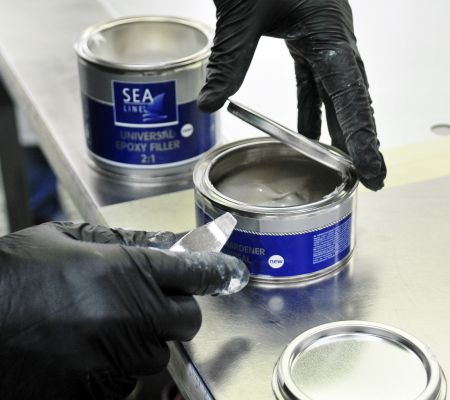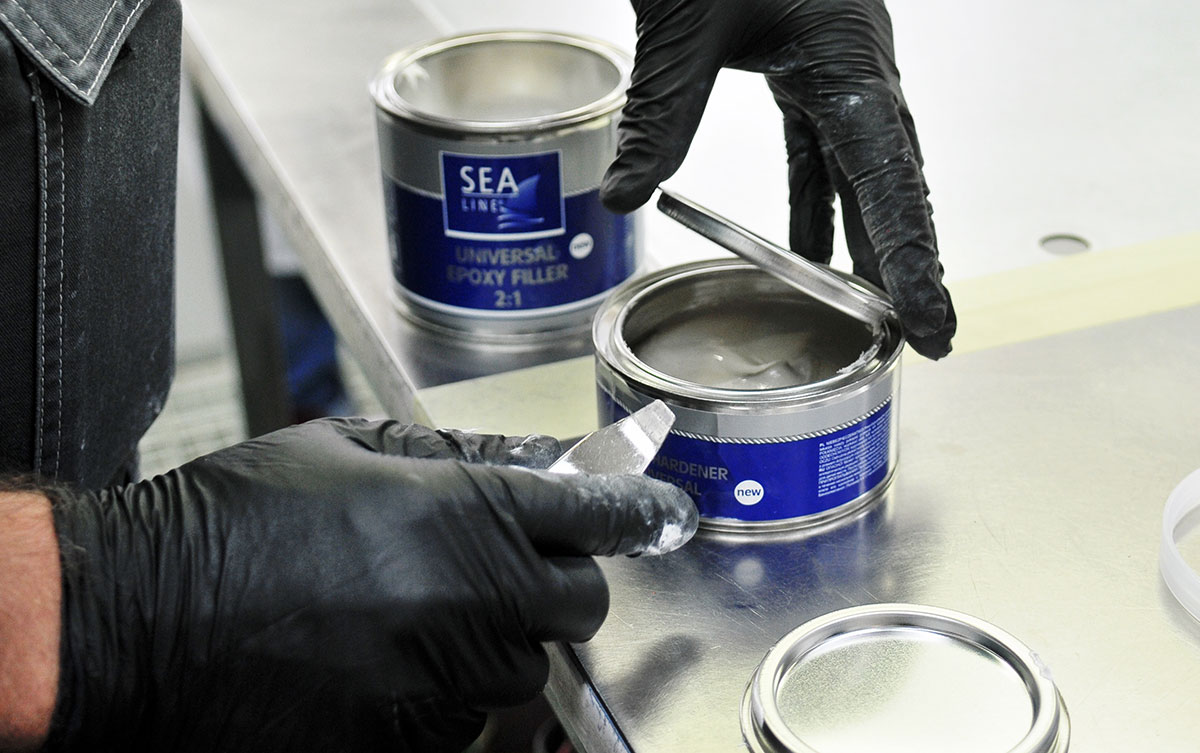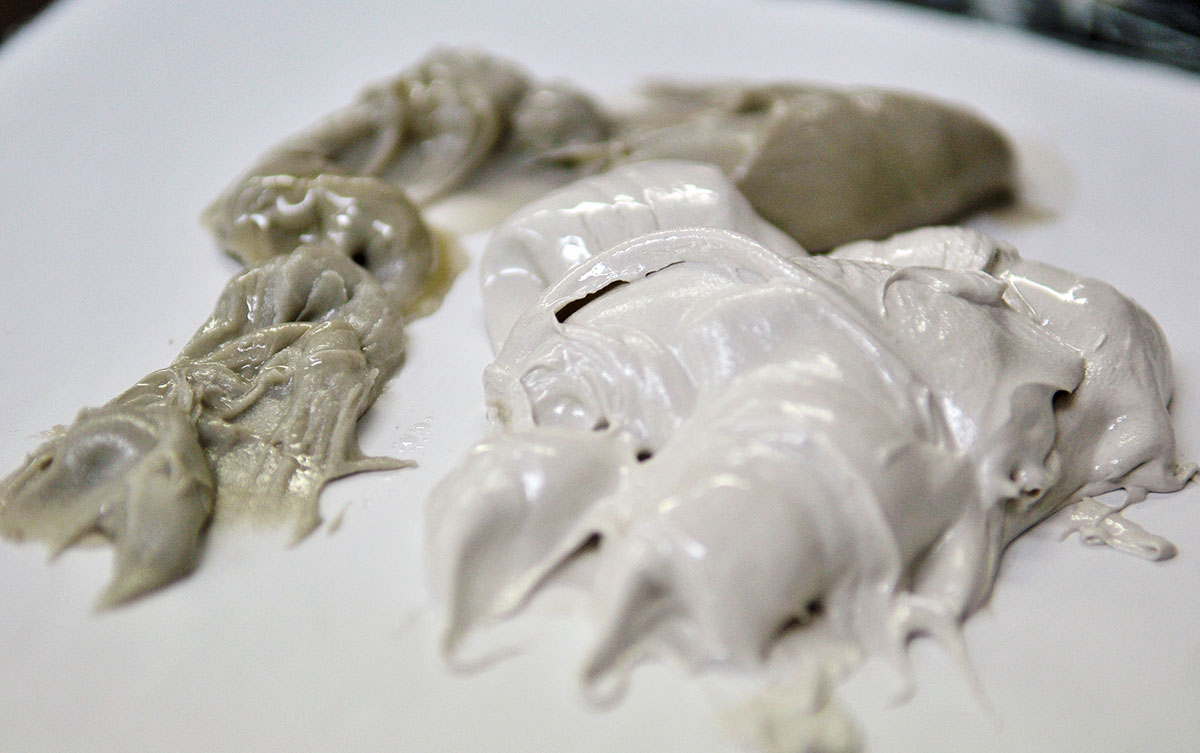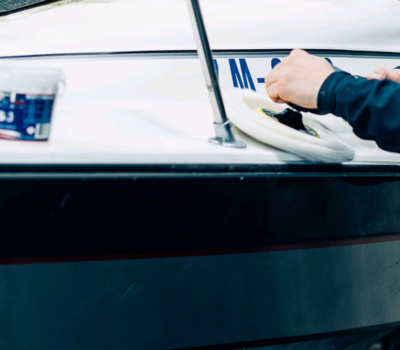Zgodnie z zapowiedziami wprowadziliśmy nowe receptury szpachlówek epoksydowych. Zmiana receptur jest podyktowana nowymi przepisami w zakresie ochrony środowiska oraz bezpieczeństwa użytkowania produktów chemicznych. Podczas projektowania nowych receptur wzięliśmy pod uwagę potrzeby użytkowników naszych produktów.
Szpachlówki będą miały łatwiejsze proporcje mieszania, bardziej komfortowy czas pracy mieszaniny oraz odchudzoną wagę. Z uwagi na zmiany i dla odróżnienia produktów na etykietach szpachlówek w nowych recepturach pojawia się widoczna ikonka „NEW”.
Karty techniczne oraz charakterystyki są dostępne w zakładce do pobrania, a poniżej przedstawiamy różnice pomiędzy dotychczasowymi i nowymi recepturami szpachlówek epoksydowych:

| Stara receptura | Nowa receptura | Różnice | |
| Kolor | Biały | Biały | Bez zmian |
| Czas utwardzania | 24h | 20h | Szybciej utwardzony produkt oznacza szybszą gotowość do dalszej obróbki |
| Czas pracy 20ﹾC (pot life) | 50 minut | 50 minut | Bez zmian |
| Waga | 1L = 850 gramów | 1L = 700 gramów | Lżejszy produkt |
| Proporcje mieszania składników | Wagowo – 100:53 Objętościowo – 2:1 | Wagowo – 100:100 Objętościowo – 1:1 | Łatwiejsze proporcje mieszania składników |
| Szpachlówka epoksydowa uniwersalna | Stara receptura | Nowa receptura | Różnice |
| Kolor | Szary | Jasny szary | Jaśniejszy odcień nowej szpachlówki |
| Czas utwardzania | 5h | 15h | Wydłużony czas utwardzania |
| Czas pracy 20ﹾC (pot life) | 10 minut | 40 minut | Wydłużony czas pracy o 30 minut. |
| Waga | 1L = 1600 gramów | 1L = 1540 gramów | Niższa waga własna produktu |
| Proporcje mieszania składników | Wagowo – 100:44 Objętościowo – 2:1 | Wagowo – 100:50 Objętościowo – 2:1 | Łatwiejsze proporcje mieszania składników |
| Szpachlówka epoksydowa z włóknem szklanym | Stara receptura | Nowa receptura | Różnice |
| Kolor | Jasny zielony | Jasny szary | Zmiana koloru |
| Czas utwardzania | 24h | 16h | Skrócony czas utwardzania |
| Czas pracy 20ﹾC (pot life) | 25 minut | 50 minut | Czas pracy wydłużony o 25 minut |
| Waga | 1L = 1800 gramów | 1L = 1550 gramów | Lżejszy produkt |
| Proporcje mieszania składników | Wagowo – 100:50 Objętościowo – 1:1 | Wagowo – 100:50 Objętościowo – 2:1 | Łatwiejsze proporcje mieszania składników |



Rozszerzamy naszą ofertę, wprowadzając dwa nowe produkty, które zapewnią entuzjastom łodzi oraz przetwórcom laminatów jeszcze

Przyjdź i dołącz do nas na METS 2023. Wspomniane targi to najlepsze wydarzenie dla profesjonalistów

Zajrzyj do nas bez wychodzenia z domu. Serdecznie zapraszamy.

Nowości w sezonie 2023 to rewelacyjna wełna polerska. Nowa biało – czarna wełna polerska w
Tak, można pomalować dno łodzi farbą poliuretanową ze względu na jej wysoką wytrzymałość mechaniczną. Takie rozwiązanie zalecamy kiedy łódź nie jest wodowana przez dłuższy czas, nie jest narażona na porastanie.
Nie zalecamy odtłuszczania powierzchni za pomocą acetonu, ponieważ aceton bardzo szybko paruje co wpływa na jakość oczyszczenia powierzchni przeznaczonej do malowania.